AMD Radeon R9 280X Video Card Review w/ ASUS, XFX and MSI
Temperature & Noise Testing
Temperatures are important to enthusiasts and gamers, so we took a bit of time and did some temperature testing on both Radeon R9 270X video cards
ASUS Radeon R9 280X TOP 3GB Video Card Idle Temperature:
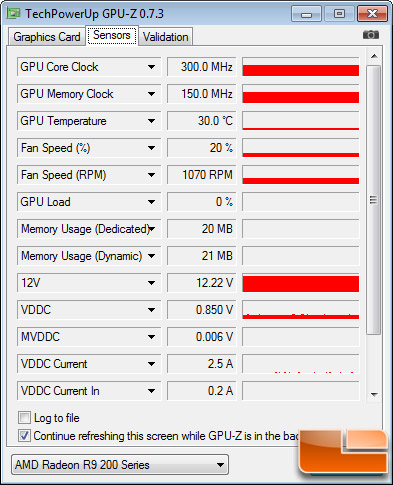
MSI Radeon R9 280X Gaming Video Card Idle Temperature:
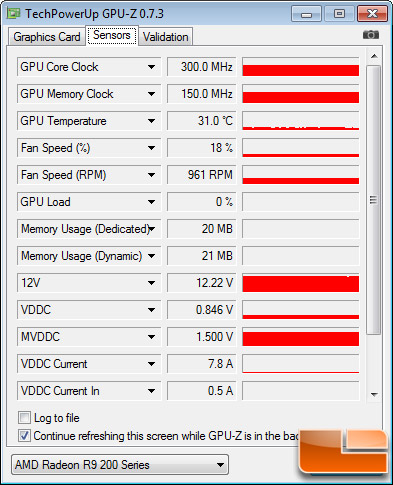
XFX Radeon R9 280X Double D Video Card Idle Temperature:
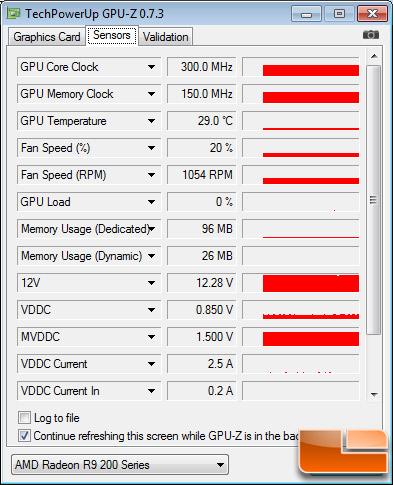
All of these AMD Radeon R9 280X video cards have custom dual-fan GPU coolers, so we were expecting to see some good performance numbers when it came to idle temperatures. The XFX Radeon R9 280X with the Ghost2 GPU cooler came in the lowest at just 29C! The ASUS Radeon R9 280X Top came in second with 30C and the MSI Radeon R9 280X came in last with an idle temperature of 31C. No one really lost here as just a 1-2C difference was noted between the cards in a room that was 22.0C (72F). Fan speeds varied between 960-1050RPM on all of the cards.
ASUS Radeon R9 280X TOP 3GB Gaming Temperature:
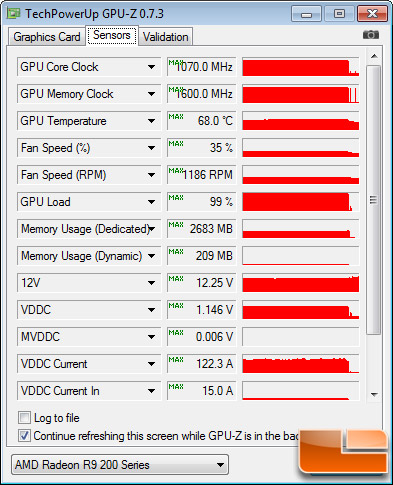
MSI Radeon R9 280X Gaming Temperature:
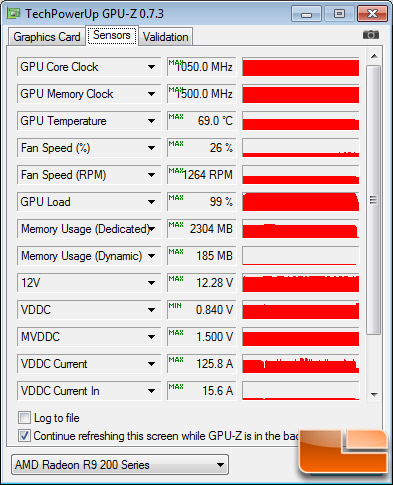
XFX Radeon R9 280X Double D Video Card Gaming Temperature:
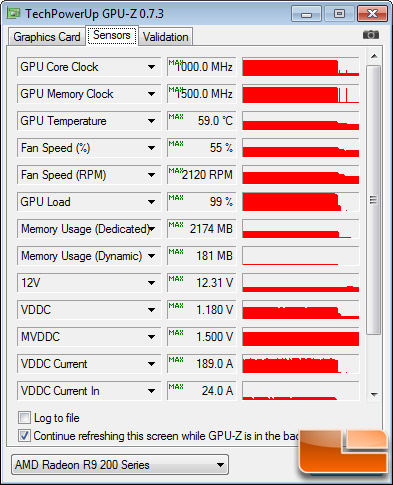
When playing Far Cry 3 and Battlefield 3 for about 30 minutes each we took a look at load temperatures and found some very significant differences between the cards. The XFX Radeon R9 280X Double D was hands down the winner by topping out at just 59C when gaming. It should be noted that the fans were spun up to a rather high 2120RPM though and it was the loudest of the bunch. The MSI Radeon R9 280X Gaming card topped out at 69C, but the fans were spinning ~850 RPM slower at just 1264RPM. The ASUS Radeon R9 280X was found to reach 68C with the fans spinning at 1168RPM.
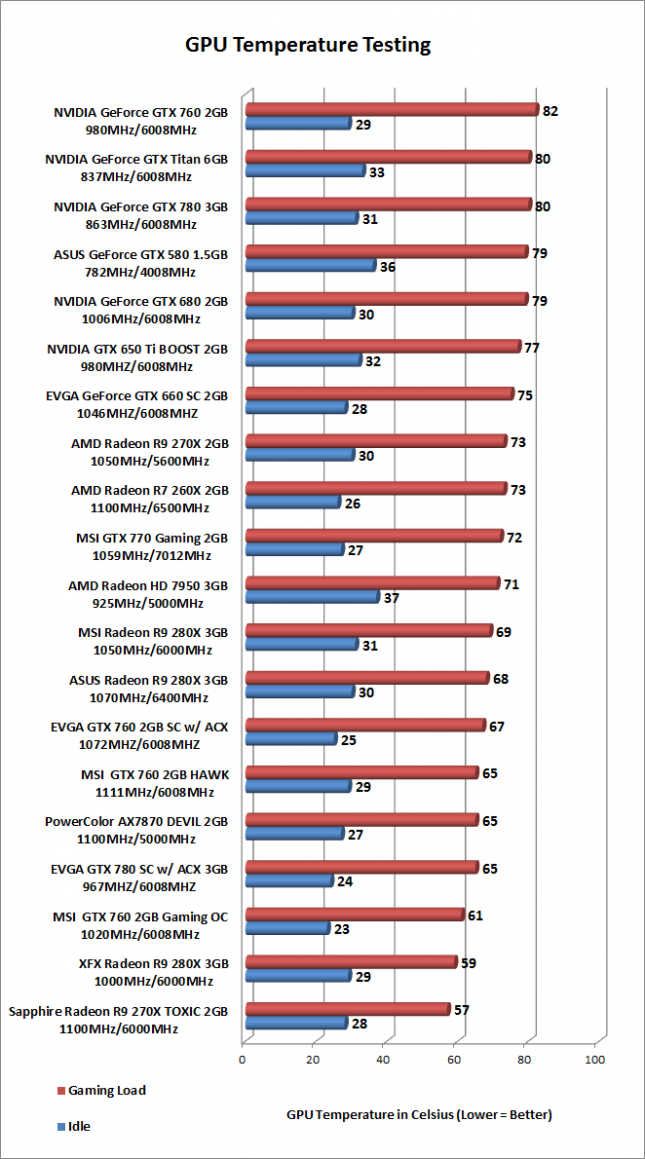
The XFX Radeon R9 280X Double Dissipation Edition card is one of the coolest cards that we have ever tested at load! The ASUS and MSI Radeon R9 280X cards fall back in the middle of the pack and are in-line with other cards when it comes to load temperatures.
Sound Testing
We recently upgraded our sound meter to an Extech sound level meter with 1.5dB accuracy that meets Type 2 standards. This meter ranges from 35dB to 90dB on the low measurement range, which is perfect for us as our test room usually averages around 36dB. We measure the sound level two inches above the corner of the motherboard with ‘A’ frequency weighting. The microphone wind cover is used to make sure no wind is blowing across the microphone, which would seriously throw off the data.
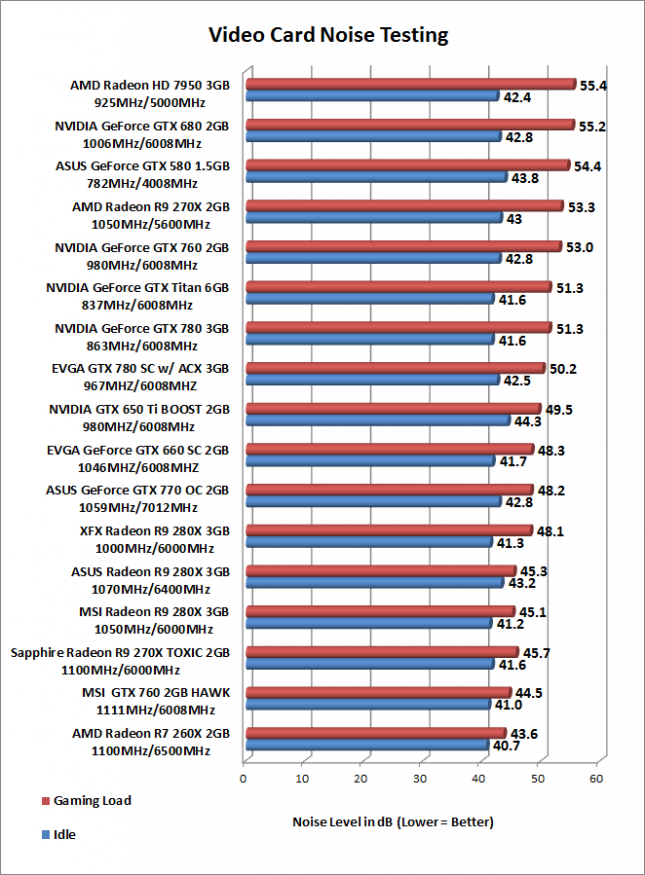
The XFX Radeon R9 280X Double D was hitting 48.1 dB when gaming, which is 3 dB higher than the MSI Radeon R9 280X Gaming. The MSI Radeon R9 280X Twin Frozr Gaming and ASUS Radeon R9 280X DirectCU II Top were within a couple tenths of one another, which isn’t significant. All are on the quieter side, but there is a major difference between the noise of the XFX card when gaming versus the coolers used on the ASUS and MSI cards.
